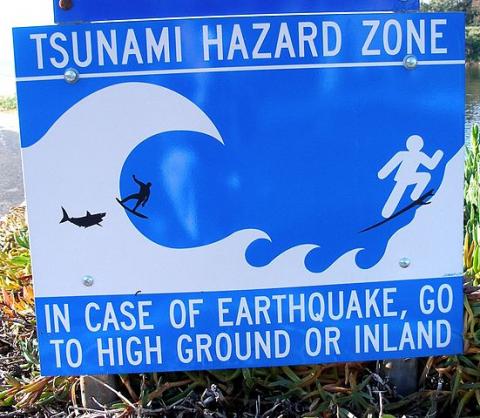Shocking study: Walking faster increases chances of tsunami survival

A groundbreaking new study suggests what some scientists have long-suspected: walking faster makes you move faster, and this is helpful in disaster situations.
In a study published this week in the Proceedings of the National Academy of Sciences, researchers say that in the event of tsunami, the more people who reach higher ground, the more who will survive. Geographers looked at 73 communities in coastal California, Oregon, and Washington, the three states that comprise the U.S. portion of the Cascadia subduction zone, which is considered a high-risk area for a major earthquake and tsunami event. Being caught in a tsunami is generally considered to be a bad thing, i.e., not good and also very scary and probably you will die if this happens.
The authors found that a disaster of this nature on the northwest coast would leave 21,562 dead when walking is the only method of escape, which is based on a walking speed of 2.5 mph (24 minutes per mile). Shockingly, researchers went on to say that the number of dead would decrease (meaning go down) by 5,592 if people walked 3.5 mph instead (17 minutes per mile). The information seems to say that moving faster increases your likelihood of getting away from a bad thing you are trying to get away from, whereas moving slower means that the bad thing will probably catch up to you. In this case, the bad thing is the tsunami. While a calm sea with no offshore earthquakes is good, like Mufasa, geographers emphasize that a tsunami is bad, like Uncle Scar.
Scientists have long suspected that getting away from a deadly disaster is a positive outcome you should strive for, but the issue is a complicated one. In order to flee a tsunami, you would need to move your body, probably by using your legs and feet to propel yourself forward. Further complicating the issue is the fact that you can walk in a variety of paces, some faster than others. This new study indicates that for some situations, such as when you are trying to escape a 30–40-foot wall of water that signals your almost-certain demise should it catch up to you, the faster pace may be the one you should aim for.
The research could prove promising in other areas. A trial has been suggested to measure the concept as it would apply to teenage characters in horror movies who have no apparent sense of danger when a masked man with a chainsaw appears. In the same vein, assuming that the a tsunami is actually just your boyfriend playing a joke on you is an ineffective safety measure. Similarly, when you step in a hornet’s nest, the best course of action may not always be to leisurely meander away from the swarming, stinging insects, despite what conventional wisdom dictates. The idea could have tangential applications reaching as far as marathon running or any type of footrace.
No information was available for those disaster victims who chose to flee via stationary bike, but the method does not sound promising.
Opponents of the study counter by suggesting that maybe the tsunami is chasing you because it’s lonely and wants a friend. Others say that the study caters too much to niche interests, and that the authors are shills for the athletic shoe community. Scientists dismiss the latter as the rantings of conspiracy theorists, but admit that the former is very possible and makes them sad.
The detractors are a minority, though, and the scientific community is clamoring for follow-up studies that address the following:
- Is running even faster than fast walking?
- How wet is water?
- Would poking yourself with a stick while standing still be more effective, less effective, or just as effective as walking quickly?

Comments
omg
Add new comment